
Herman Langelius (1614 – 1666), was a Dutch Protestant minister known best today for his portrait by Frans Hals.

Herman Langelius (1614 – 1666), was a Dutch Protestant minister known best today for his portrait by Frans Hals.
He was born in Haarlem but was first called to Rotterdam. In 1654 he became bible corrector in Leiden along with L. Vinckius and Henricus Rulaeus. He later became a preacher in Amsterdam and was featured after his death there in a 12-page sermon called Last hours of Rivet, Bassecourt, Langelius and Landtman., by the Amsterdam preacher Casparus de Carpentier.

Herman Boerhaave was a Dutch botanist, chemist, Christian humanist, and physician of European fame. He is regarded as the founder of clinical teaching and of the modern academic hospital and is sometimes referred to as "the father of physiology," along with Venetian physician Santorio Santorio (1561–1636). Boerhaave introduced the quantitative approach into medicine, along with his pupil Albrecht von Haller (1708–1777) and is best known for demonstrating the relation of symptoms to lesions. He was the first to isolate the chemical urea from urine. He was the first physician to put thermometer measurements to clinical practice. His motto was Simplex sigillum veri: 'Simplicity is the sign of the truth'. He is often hailed as the "Dutch Hippocrates".

Hermanus "Herman" Brood was a Dutch musician, painter, actor and poet. As a musician he achieved artistic and commercial success in the 1970s and 1980s, and was called "the greatest and only Dutch rock 'n' roll star". Later in life he started a successful career as a painter.
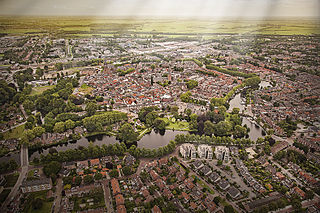
Woerden is a city and a municipality in central Netherlands. Due to its central location between Amsterdam, Rotterdam, The Hague, and Utrecht, and the fact that it has rail and road connections to those cities, it is a popular town for commuters who work in those cities.

Willem Frederik Hermans was a Dutch author of poetry, novels, short stories, plays, as well as book-length studies, essays, and literary criticism. His most famous works are The House of Refuge, The Darkroom of Damocles, and Beyond Sleep.
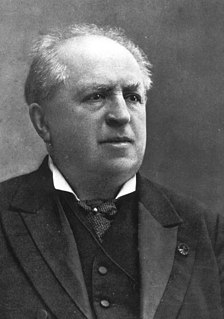
Abraham Kuyper was the Prime Minister of the Netherlands between 1901 and 1905, an influential neo-Calvinist theologian and a journalist. He established the Reformed Churches in the Netherlands, which upon its foundation became the second largest Calvinist denomination in the country behind the state-supported Dutch Reformed Church.

Jacobus Arminius, the Latinized name of Jakob Hermanszoon, was a Dutch theologian during the Protestant Reformation period whose views became the basis of Arminianism and the Dutch Remonstrant movement. He served from 1603 as professor in theology at the University of Leiden and wrote many books and treatises on theology.

Herman Bavinck was a Dutch Calvinist theologian and churchman. He was a significant scholar in the Calvinist tradition, alongside Abraham Kuyper and B. B. Warfield.

Herman Gorter was a Dutch poet and socialist. He was a leading member of the Tachtigers, a highly influential group of Dutch writers who worked together in Amsterdam in the 1880s, centered on De Nieuwe Gids.
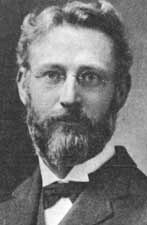
Geerhardus Johannes Vos was a Dutch-American Calvinist theologian and one of the most distinguished representatives of the Princeton Theology. He is sometimes called the father of Reformed Biblical Theology.
Herman Husband (1724–1795), also known as Harmon Husband, was a farmer, radical, pamphleteer, author, and preacher. He is best known as a leader of The Regulators, a populist rebellion in the Carolinas in the years leading up to the American Revolutionary War. He was born on December 3, 1724, in Cecil County, Maryland to William Husband and Mary Kinkey/Kankey. He was likely named after his maternal grandfather, Herman Kankey (c.1680-1732). Herman was raised as an Anglican, but became disenchanted with his original faith. One of the many to be inspired to the Great Awakening after hearing George Whitefield preach, he became a "New Light" Presbyterian and then a Quaker. Husband was twice elected to the North Carolina assembly, but was expelled during his second term.
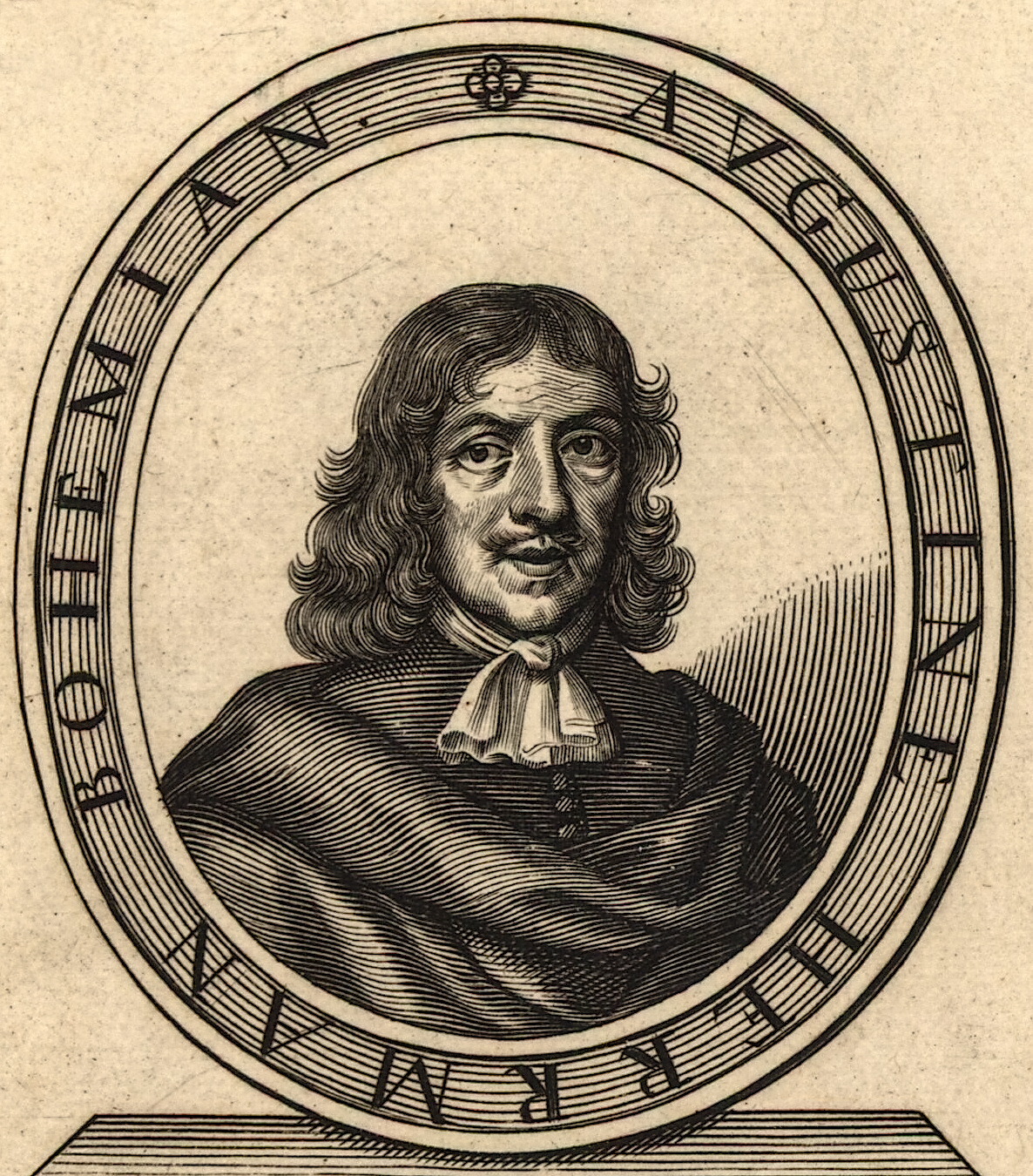
Augustine Herman, First Lord of Bohemia Manor was a Bohemian explorer, merchant and cartographer who lived in New Amsterdam and Cecil County, Maryland. In the employment of Cecil Calvert, 2nd Baron Baltimore, he produced a remarkably accurate map of the Chesapeake Bay and Delaware Bay regions of North America, in exchange for which he was permitted to establish an enormous plantation that he named Bohemia Manor in what is now southeastern Cecil County, Maryland.

Herman Krebbers was a Dutch violinist.
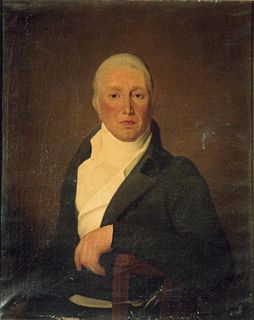
Wybo Fijnje was a Dutch Mennonite minister, publisher in Delft, Patriot, exile, coup perpetrator, politician and - during the Batavian Republic and Kingdom of Holland - manager of the predecessor of the Staatscourant.
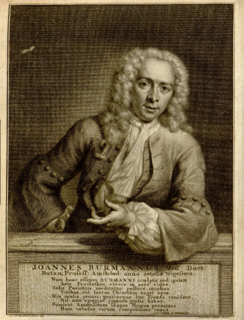
Johannes Burman, was a Dutch botanist and physician. Burman specialized in plants from Ceylon, Amboina and Cape Colony. The name Pelargonium was introduced by Johannes Burman.

Gerard Brandt was a Dutch preacher, playwright, poet, church historian, biographer and naval historian. A well-known writer in his own time, his works include a Life of Michiel de Ruyter and a Historie der vermaerde zee- en koopstadt Enkhuisen.
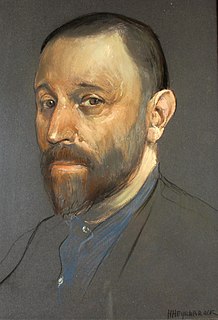
Herman Heijenbrock, was a Dutch writer, painter, pastel draughtsman, and lithographer. He founded the "Museum van den Arbeid" in 1923, which later became NEMO Science Museum.

Jacques Fabrice Herman Perk was an important Dutch poet of the late 19th century, who died young. His crown of sonnets Mathilde, published by Willem Kloos, was the first important announcement of a renewal in Dutch poetry brought about by artists that came to be known as the Tachtigers. Perk's lyrical poems about nature, especially his sonnets, were influenced by Percy Bysshe Shelley, and were of great importance to Dutch poetry.
Herman Daggett was an American Presbyterian minister and early animal rights writer.
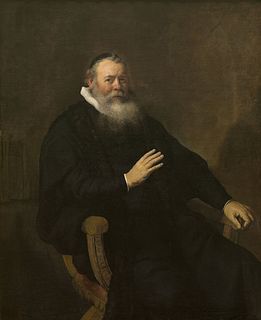
The Preacher Eleazar Swalmius is a 1637 oil-on-canvas painting by the Dutch artist Rembrandt. It is currently owned by the Royal Museum of Fine Arts in Antwerp. The painting has been certified a real Rembrandt. The painting was listed in 1727 in the catalog of the Duke of Orléans collection, as a portrait of an Amsterdam mayor by Rembrandt. It remained in the noble family's possession until 1792, when Duke Louis-Philippe-Joseph sold the entire collection to finance his political career and pay off debts. The painting passed through several English collections into the hands of the Bourgeois brothers, art dealers from Cologne, who sold the painting as an original Rembrandt to the museum in 1886. The painting was stored away for a long time due to doubts cast over its authenticity.
Anarchism in the Netherlands originated in the second half of the 19th century. Its roots lay in the radical and revolutionary ideologies of the labor movement, in anti-authoritarian socialism, the free thinkers and in numerous associations and organizations striving for a libertarian form of society. During the First World War, individuals and groups of syndicalists and anarchists of various currents worked together for conscientious objection and against government policies. The common resistance was directed against imperialism and militarism.